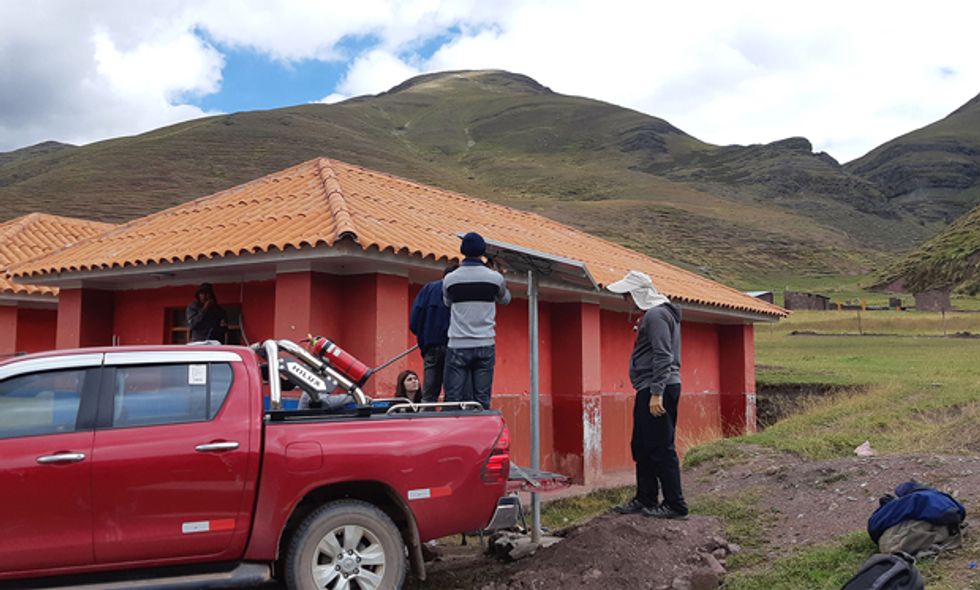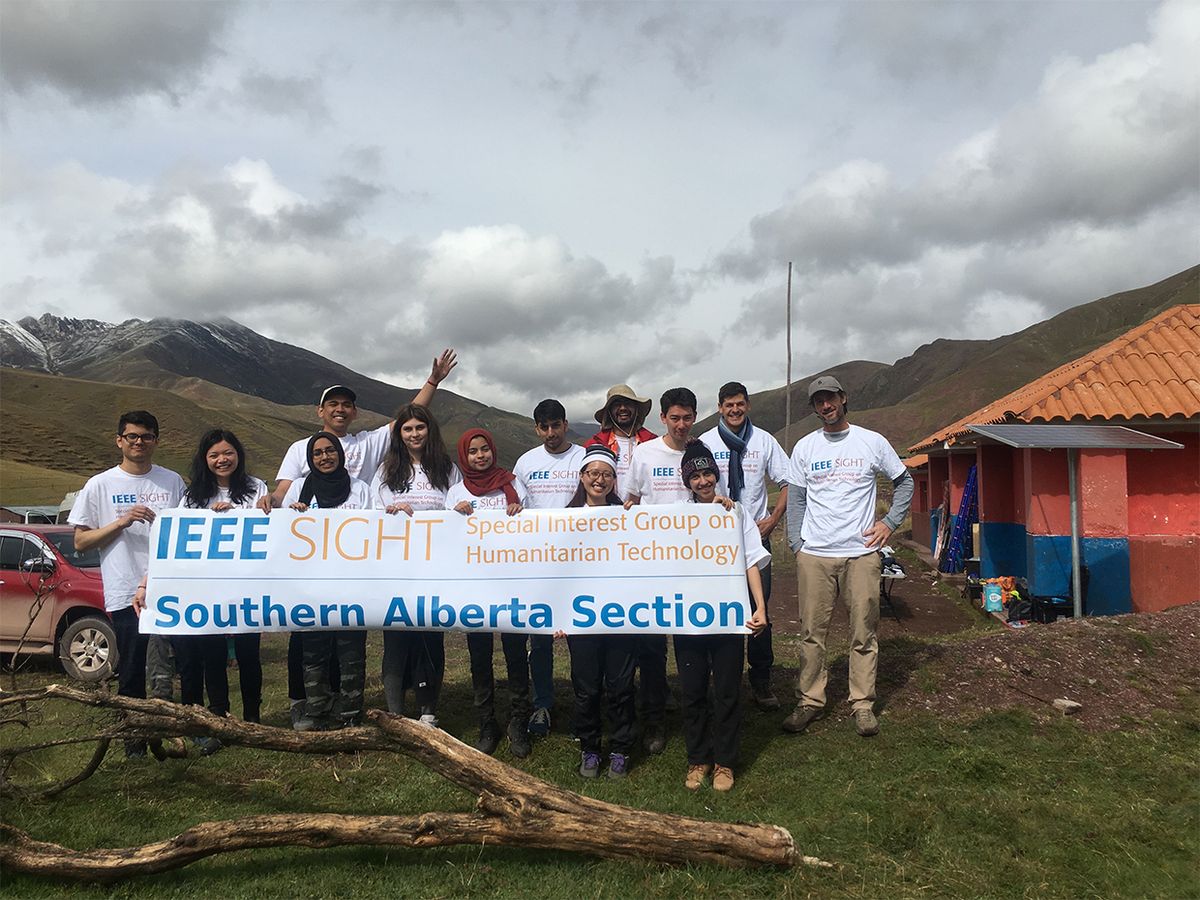Imagine trying to read a book by candlelight or risking your health with kerosene lamps so you can hold a town hall meeting. That is the reality in many communities around the globe that lack access to electricity.
To combat such challenges, the IEEE Special Interest Group on Humanitarian Technology (IEEE SIGHT) partners with local organizations to bring technology to underserved communities. The IEEE volunteer network looks to bring sustainable technological solutions to communities so they can prosper.
IEEE Student Member Joel Wong of the University of Calgary, along with 11 other IEEE SIGHT volunteers from the Southern Alberta Section in Canada, traveled to Peru in May with Light Up the World. The Canadian nonprofit focuses on the principle that access to energy can improve lives. The IEEE volunteers teamed up with Light Up the World volunteers to install a 325-watt solar-panel system in Hanchipacha, an off-grid community of 150 people. The volunteers drove on mountain roads for 75 minutes from Checacupe, where they were staying, to reach the remote village.
“It’s the smaller, remote communities that have the greatest need, because services won’t be brought to them any time soon,” Wong says. “These villages are not prioritized for development. It could’ve taken 10 to 20 years for Hanchipacha to gain access to [electric] energy.”

GETTING STARTED
Wong first heard about IEEE SIGHT through an event at the University of Calgary, where he is a senior working toward a dual bachelor’s degree in electrical engineering and computer science. The idea of helping others through engineering inspired him to join the group.
“I feel like those of us living in Canada and other developed nations are very privileged,” Wong says, adding that Canadians have a responsibility to help those without the same level of access to education, electricity, food, and shelter.
To choose which villages could benefit the most from access to electricity, Light Up the World surveys the needs of communities around the globe.
“All of the communities are off-grid, so no power and no cell phone coverage,” Wong says. “Light Up the World surveys things like government plans for services in the community, access to energy, population, and potential uses of the electricity. One of the villages most in need was Hanchipacha.”
The students received training from Light Up the World staff about the fundamentals of solar energy as well as wiring conventions in Peru. They also learned about the importance of safety, maintainability, and sustainability of the solar-panel system, which included batteries for energy storage and nine 5W lights.
Wong says the volunteers and Light Up the World staff worked with Peruvian technicians to install the system. The process took three days to complete.
THE TECHNOLOGY
In the Light Up the World system, DC current generated by the solar panels is used to charge a pair of 150-ampere-hour batteries or fed through an inverter to immediately supply AC electricity to a set of 220-volt outlets. The outlets can power lights and other things the villagers need—which are mainly located in the community center and other shared spaces.
“When the installation was completed, a ceremony was held, and it was a very meaningful experience for everyone,” Wong says. “One leader of the community spoke at the ceremony and said that he was grateful to us for installing the system. The community will use it for years to come.”
The system will be maintained by trained local technicians as well as Light Up the World staff, Wong says.

HOW IT HELPED
The installation of the solar-panel system has positive environmental, economic, and social effects, Wong says.
As in many communities, Hanchipacha was relying on one-time-use batteries and kerosene lamps for lighting, he says. Kerosene lamps have both health and environmental risks. According to the University of Calgary’s Energy Education website, the lamps emit carbon monoxide, nitric oxide, and sulfur dioxide, which can reduce lung function and increase the risk of cancer. Also, according to researchers at the University of California, Berkeley, and the University of Illinois at Urbana-Champaign, kerosene lamps are a more significant source of black carbon than previously thought. Black carbon is a significant contributor to global warming.
Wong says that with the solar panels in place, the community no longer faces the health and environmental risks of kerosene and avoids the financial burden of paying for those lighting sources. The people also have an opportunity to diversify economically because they now can use power tools, for example.
“In terms of social impacts, the solar energy system can help the residents of Hanchipacha hold town hall meetings after dark,” Wong says. “This is quite important for the village because they are an agricultural community and daylight hours are very valuable.”
The system has enabled children to study in the community center at night, he says. Children are expected to do chores to help their farming families, he points out, so “they have limited hours to study, and when they do have time to study, it’s at night.” In the past, he says, students used candles to light the room and had a difficult time reading. Now, he says, they are able to keep up with their schoolwork.
IEEE SIGHT is planning another solar project in Peru in May—which Wong is leading.
This article appears in the March 2020 print issue as “Joel Wong Lights Up Peruvian Village.”
Joanna Goodrich is the associate editor of The Institute, covering the work and accomplishments of IEEE members and IEEE and technology-related events. She has a master's degree in health communications from Rutgers University, in New Brunswick, N.J.



